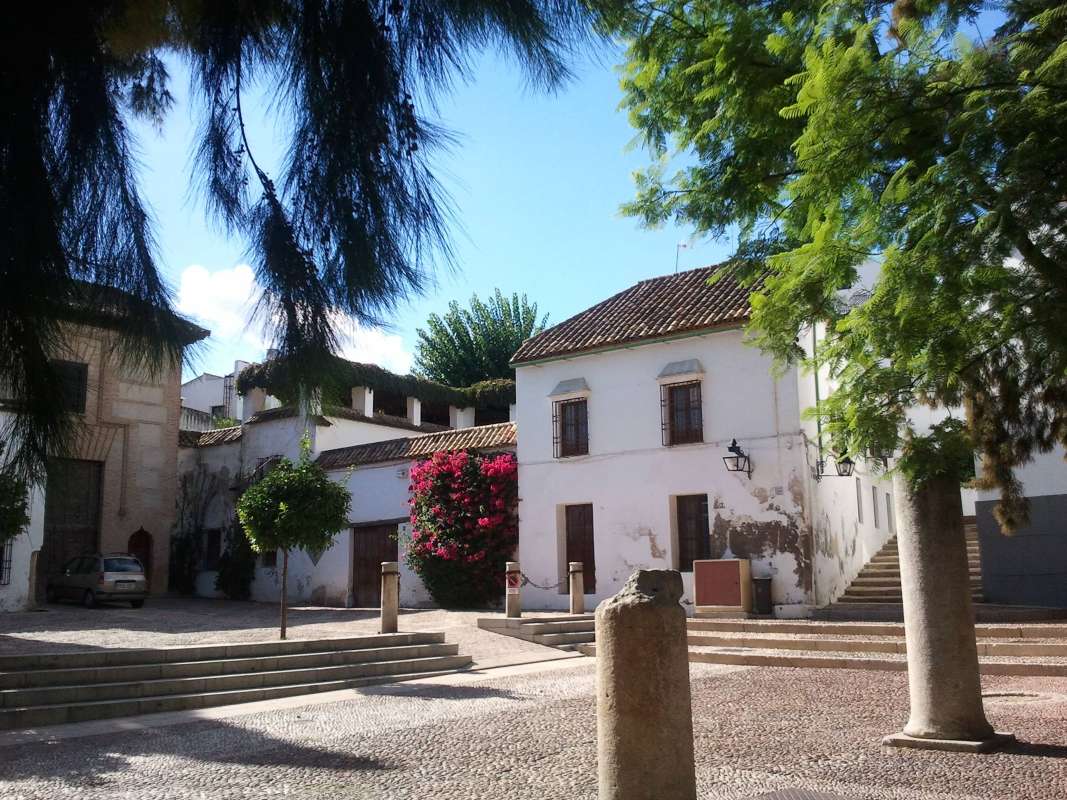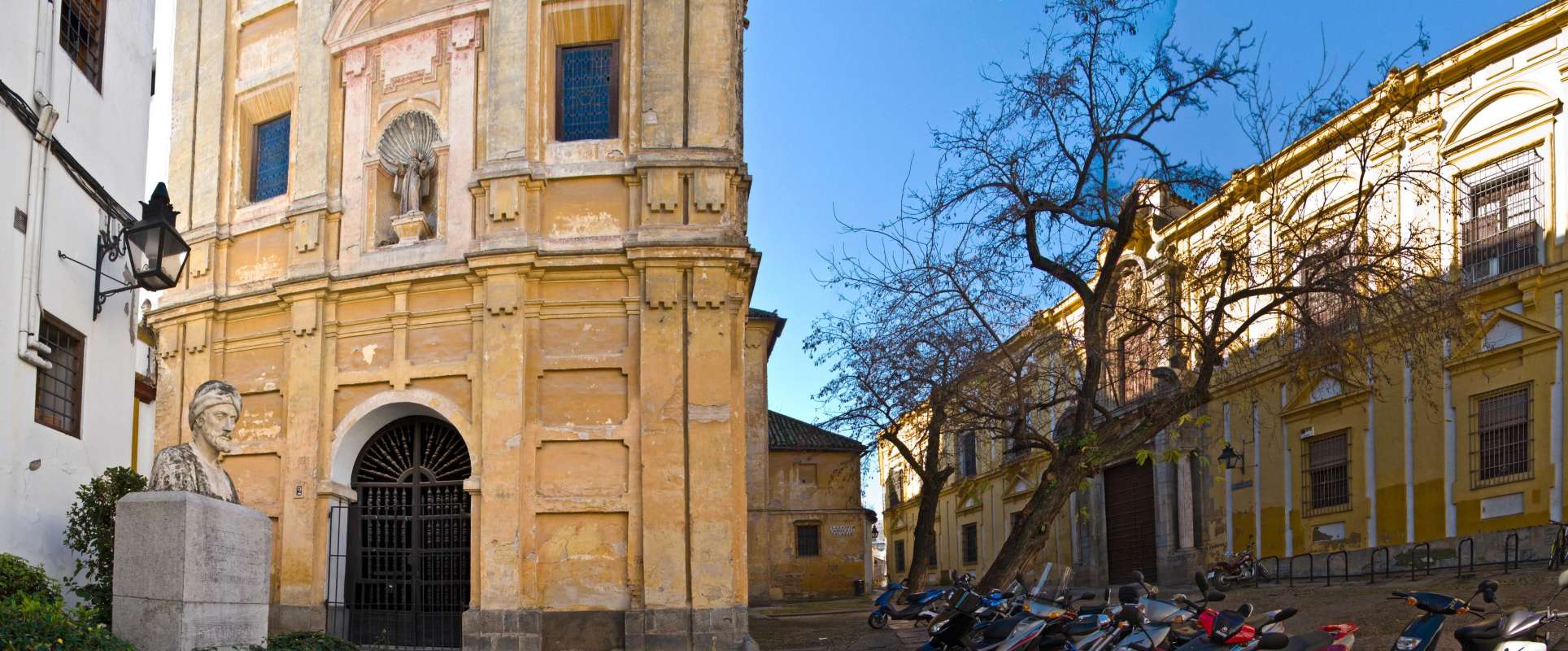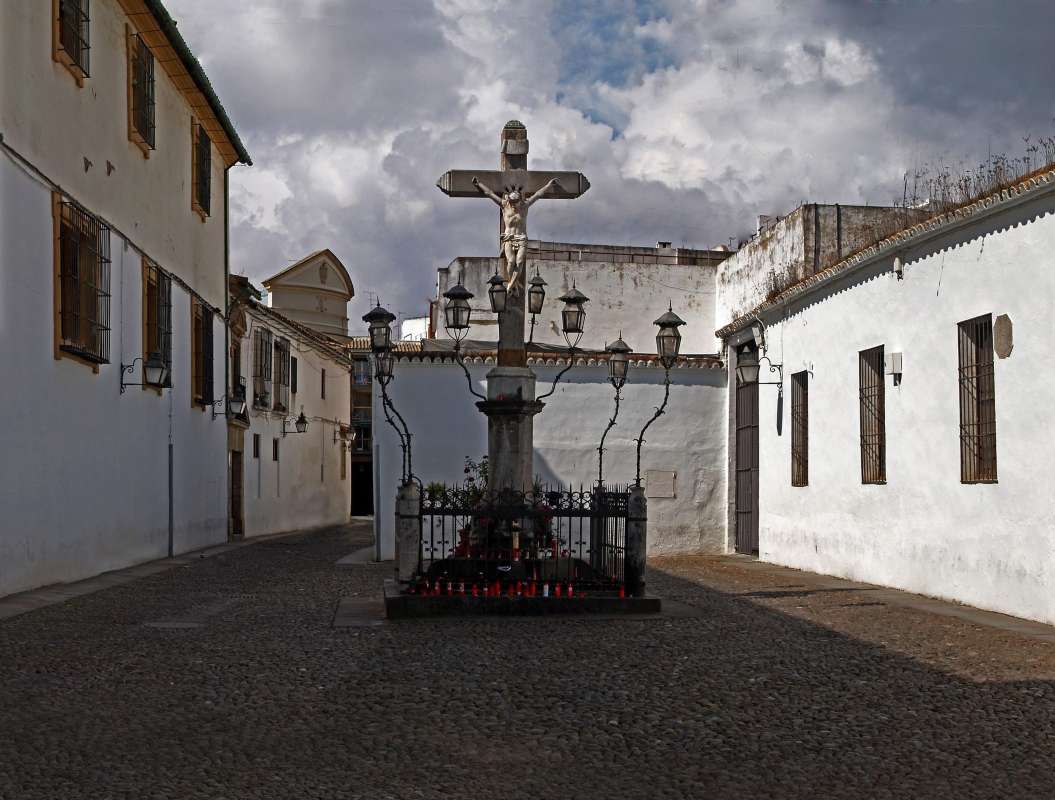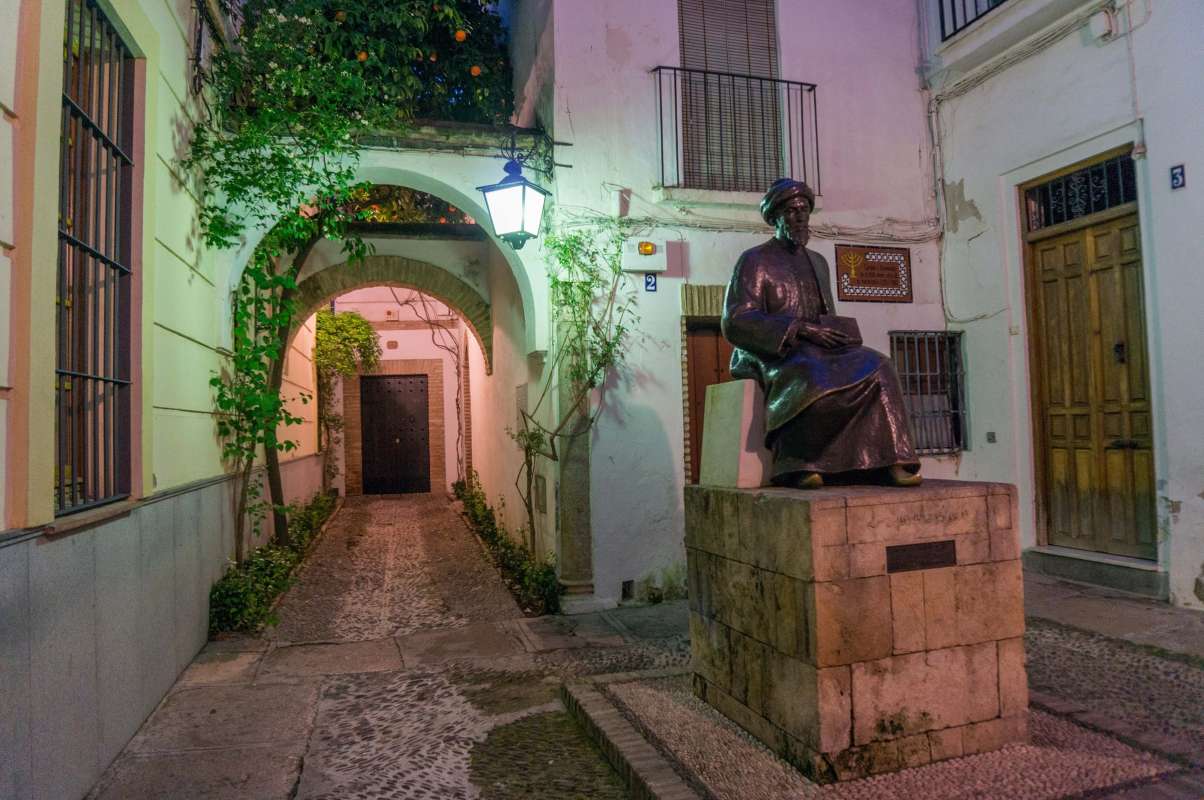The most emblematic squares in Córdoba
Plaza del Potro
The Plaza del Potro in Cordoba is one of the most beautiful places in the city. It is located in the area of San Francisco Ribera, near the Guadalquivir River. In the centre of the square is a 16th century Renaissance fountain with the image of a rearing colt holding the coat of arms of Cordoba between its front legs Until it was moved in 1847, the fountain was on the other side of the corner.
Originally the enclosure was square in shape, but the construction of the Hospital de la Caridad in the 15th century reduced its size and gave it its present form. Today, the old hospital building houses two of Cordoba’s most important museums: the Julio Romero de Torres Museum and the Fine Arts Museum.
This square is also home to the well-known Posada del Potro, mentioned by Miguel de Cervantes in his universal work Don Quixote de la Mancha“. It is the last of many inns that used to surround the square, as in the Middle Ages this place was very popular with Cordobeses and outsiders who came to the city to take part in the sale of horses and mules that was held in this area.
It has always been believed that the square is named after the small sculpture that adorns the fountain, but we should also consider that its name may be due to the livestock fair that was held here year after year. Opposite the fountain is a monument to San Rafael, which was moved to this new location in 1924 from the Plaza de Ángel.
Plaza de la Corredera
The Plaza de la Corredera is one of the most emblematic squares in the city. It is located in the historic centre of the city and has a rectangular shape, being one of the largest squares in Andalusia. The square has a long history dating back to the 17th century, when it was built as a bullring For many years, the Plaza de la Corredera was an important venue for bullfights and other festive events. However, with the passing of time, it ceased to be used for this purpose and became a public space for the enjoyment of citizens and visitors.
Today, the Corredera is a very lively and busy place. It has numerous bars and restaurants in the surrounding area, where visitors can enjoy the gastronomy of Cordoba It is a meeting point for locals and an ideal place to have a drink in the open air while contemplating the beauty of the surroundings. The square also hosts a mercado municipal in the mornings, where you can find fresh produce, handicrafts and other items. Throughout the year, various cultural events and festivals are organised in the square, including concerts.
Plaza de Jerónimo Páez
The Plaza de Jerónimo Páez is made up of three distinct areas. Firstly, there is the square itself, which houses the entrance to the Archaeological and Ethnological Museum of Córdoba. Secondly, there is the entrance to the well-known Casa del Judío. Finally, there is the adjacent street that leads to Calle Julio Romero de Torres.
In ancient times, this square, known as Plaza de los Paraísos, housed a Roman theatre with an estimated capacity of more than 10,000 spectators. Unfortunately, this theatre was destroyed by an earthquake in the 3rd century. However, the remains of this theatre are now on display in the Archaeological and Ethnological Museum of Cordoba, located in this same square, in the former Palace of the Páez de Castillejo family.
During the 1990s, the Plaza Jerónimo Páez underwent a refurbishment after years of neglect. In the central part of the square, huge collapsed columns can be seen on the ground, which have historically served as seats. At the end of the 20th century, a large part of the square was fenced off in order to carry out the renovations of the Archaeological and Ethnological Museum of Cordoba, whose renovation was completed in January 2011 with the inauguration of the museum’s extension.
Plaza del Cardenal Salazar
The Plaza del Cardenal Salazar is located in the heart of the Jewish Quarter, very close to the Mosque-Cathedral; it is accessed from Romero and Almanzor streets, and owes its name to Cardinal Fray Pedro de Salazar y Toledo.
This small square is home to the Hospital del Cardenal Salazar, today the headquarters of the Faculty of Philosophy and Lettersand the Convent Church of San Pedro de Alcántara. Its history is rather curious, as the Hospital del Cardenal Salazar was originally intended to house a school for acolytes and choirboys of the Cathedral.
However, in 1704, a terrible plague epidemic struck the city, which, together with the limited sanitary resources available to the city, made it necessary to rethink the nature of the building when it was in the middle of construction. It was then that the cardinal himself decided to convert the building into an acute care hospital. It was not until 1971 that the University College was founded, the beginnings of the future University of Cordoba, which after its creation in 1974, installed the well-known Faculty of Philosophy and Letters there.
Plaza de Capuchinos
The Plaza de Capuchinos received its name from the 17th century, when the original convent of the Franciscan friars was established. In the centre of the square stands the renowned Cristo de los Faroles, a work by the artist Juan Navarro, whose true dedication is “Cristo de los Desagravios y Misericordias”. The Plaza de Capuchinos is known for its charm and architectural beauty. Its corners have a special atmosphere, with decorative elements that evoke the historical past of the city. It is a very popular place for tourists looking to explore and enjoy the architecture, culture and picturesque atmosphere of Cordoba
Plaza de las Tendillas
The Plaza de las Tendillas is considered the centre of the Cordoban capital, the heart of the city, chosen for the most important events such as exhibitions, games, verbenas, celebrations, etc. Its current renovation is the result of the changes made in this area, which made it possible after the seizure and demolition of many buildings in the area and was completed in 1928.
The final construction of the square, to give it its current form, was done in 1999 and was inaugurated on 13 May by Mayor Rafael Merino. During the reconstruction, automobile traffic was completely eliminated, and all the news, popcorn, coupon and lottery kiosks were reorganised.
Plaza de Tiberíades
This small square is notable for the monument to Maimonides, a Cordovan thinker, physician and Jewish rabbi who lived in the 12th century, as well as the house where he was born. The square is named after the Lake of Tiberias, better known as the Sea of Galilee, where he supposedly died. However, historical tradition holds that he died in Cairo, Egypt At number 2 Judíos Street, next to the square, is the house which, according to period records and evidence, belonged to Maimonides’ family, where he is supposed to have been born and lived until his departure from Córdoba. There is now a commemorative insignia.
We hope you have enjoyed this article. Now you know that Cordoba hides a large number of beautiful corners full of history in which to lose yourself. If you liked it, you can continue reading The most beautiful streets of Cordoba.








